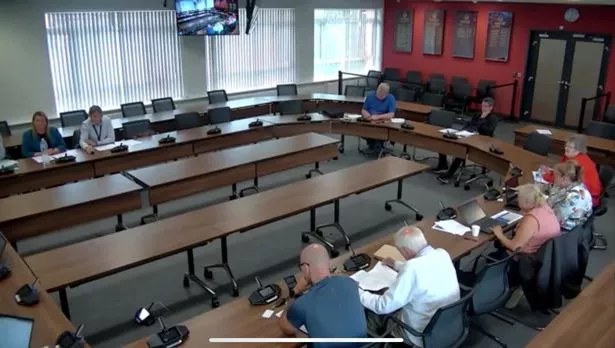The council also identified key driver of homelessness were loss of private sector tenancies through ‘no fault evictions’
16:50, 16 Jul 2025Updated 16:51, 16 Jul 2025
 File photo of two homeless people sleeping rough(Image: PA)
File photo of two homeless people sleeping rough(Image: PA)
Rough sleeping and homelessness increased ‘significantly’ in one part of Merseyside as a new council report revealed the scale of the problem and the difficulties in finding lasting solutions.
The stark figures were presented last night (July 15) at a Knowsley Council’s ‘Inclusive Growth and Skills Scrutiny Committee’ in Huyton’s Municipal Buildings. Councillors were asked to assess the local authority’s Homelessness and Rough Sleeping Strategy for 2025 to 2030 and approve the report’s recommendations.
The homelessness review found that Knowsley experiences a rate of homelessness that is higher than the average for England. In 2023/24, rates of homelessness were 4% higher than in 2021/22. This meant that 1,147 households were owed a duty to help them resolve their homelessness.
According to the Rough Sleeping annual snapshot data gathered by the Ministry of Housing, Communities and Local Government – of both the near neighbour comparator authorities and the LCRCA – Knowsley has consistently had one of the lowest rates of rough sleeping.
However, the latest MHCLG data now shows the number of rough sleepers in Knowsley has risen ‘significantly’ over the course of a month, with sharp peaks in December 2023 and February 2024. New rough sleepers over the course of a month have also increased from one in October 2020 to spikes of 16 in February and April 2024.
 Inclusive Growth and Skills Scrutiny Committee (credit: Knowsley Council)(Image: Knowsley Council)
Inclusive Growth and Skills Scrutiny Committee (credit: Knowsley Council)(Image: Knowsley Council)
The council report said the rise in rough sleeping is largely driven by individuals leaving asylum accommodation and those being discharged from institutions. It also identified the key drivers of homelessness as loss of private sector tenancies (38%) and family and friends no longer willing or able to accommodate (32%).
Furthermore, the local authority said the loss of private sector accommodation is increasing demand for homelessness services, driven by landlords choosing to exit the market. This is a cause for concern because Knowsley already has a lower proportion of private rented sector housing compared to the England average
The reduction in this sector has been shown to have a knock-on impact on attempts to minimise homelessness, because lower supply has led to increased rental premiums that landlords can charge.
However, the council confirmed that 75% of homeless cases are now being found accommodation to resolve their homelessness through Property Pool Plus while only 17% are being found accommodation in the private rented sector.
The council report was presented by Group Manager of Housing at Knowsley Council, Alan Broadbent, who said: “What we’ve really seen is an increase in the number of households who are becoming homeless because of the section 21 notice. You only need to have a look on Rightmove and see the number of properties advertised with a sitting tenant.
“So lots of landlords are looking to exit the market […whilst] other landlords will choose to go down the route of serving what we call a ‘no fault eviction notice’ so they can get possession of the property and sell it. We’ve seen a real increase in that.
“What we’re also seeing now is, in any one month, about 13 rough sleepers. That’s not to say that we’re getting 13 and they’re just adding up over the months. But as we’re finding solutions, there’s almost like a pipeline coming behind them. So it’s a growing problem that we need to respond to.
Mr Broadbent added: “We need to continue important work around preventing homelessness. If we can stop people becoming homeless in the first place and keep them in their accommodation, brilliant.
“Then we find them somewhere alternative to go so that there’s a smooth transition and it’s about making sure we can support our households around that. It’s also about and integral to that we’re providing support at the right time.
“We also need to increase the amount of accommodation that’s available. Obviously, big in the news with the government around increasing house building.
“We’ve seen quite a lot of affordable houses built over recent years, but sadly, what we’ve also seen is almost an equal number of properties lost from the the social housing portfolio, because of Right-to-Buy.”
